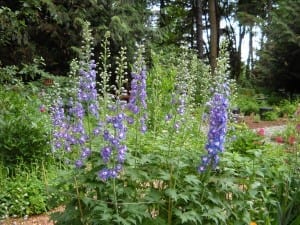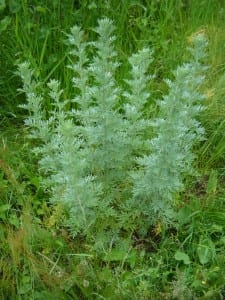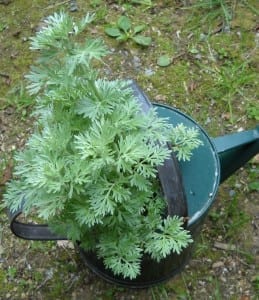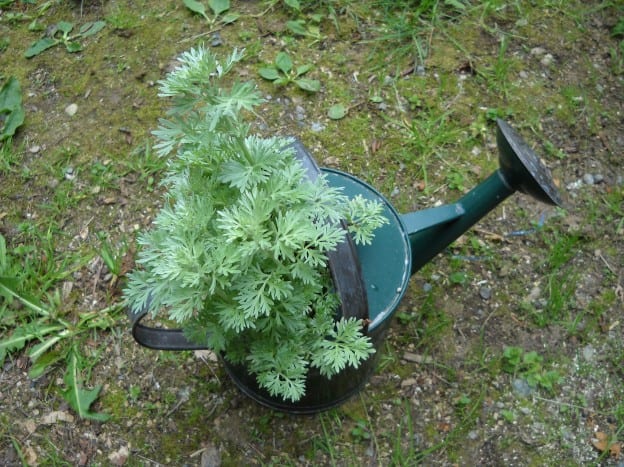 Each visit to Jean’s garden brings fresh delights, a new plant bursting forth in full colour to feed the hummingbirds and bees.
Each visit to Jean’s garden brings fresh delights, a new plant bursting forth in full colour to feed the hummingbirds and bees.
The lovage is the light green in the centre of the picture, behind the delphiniums, now taller than I am and the mint filled pots are ready for a project of some kind.
We took a drive down the road to collect some wormwood.
Wormwood is a member of the Artemisia genus and is related to mugwart. It prefers an environment well drained with full sun and a neutral soil. It makes a good companion plant at the edge of a garden as it is strongly insecticidal. ( One of the reasons it has been suggested that laying it between furs and other castlehold items was a good thing ). Once established all it really needs is a light prune in the spring. It blooms from July to October and will tolerate frost in most zones.
 The proverb, “as bitter as Wormwood” is well founded but for many years wormwood was highly sought after by brew masters as an alternative to hops.
The proverb, “as bitter as Wormwood” is well founded but for many years wormwood was highly sought after by brew masters as an alternative to hops.
It has also been suggested by some ancient cultures that wormwood could counter the effects of hemlock, toadstool and the bite of sea dragons. ( If anyone can personally verify that last one please add a comment on the Facebook page.)
This is not a cooking herb although it is said that laying wormwood along the back of a roasting goose will cut the fat. It is however, one of many herbal bitters used to create traditional aperitifs. The intention of an aperitif is to stimulate stomach secretions before a meal.
It was more often used to treat digestive issues, worm infections and other infections of the stomach and bowel.
Nerves, fever and menstrual issues are also said to benefit from wormwood and it acts as a tonic to the gallbladder and liver.
We dug up two plants for transplanting and set them in water to help with the shock before moving them into their new homes.
They have fine feathery leaves with silver undertones that make a nice backdrop for other plants. This shrub will grow to between 2.5 and 3 feet.
This little poem is from a 1577 edition of July’s Husbandry by Tusser.
While thresh and and plants have been replaced with tiles, carpets and hardwood, it is interesting to understand how people coped with fleas in 16th century living.
- ‘While Wormwood hath seed get a handful or twaine
- To save against March, to make flea to refraine:
- Where chamber is sweeped and Wormwood is strowne,
- What saver is better (if physick be true)
- For places infected than Wormwood and Rue?
- It is a comfort for hart and the braine
- And therefore to have it it is not in vaine.‘


